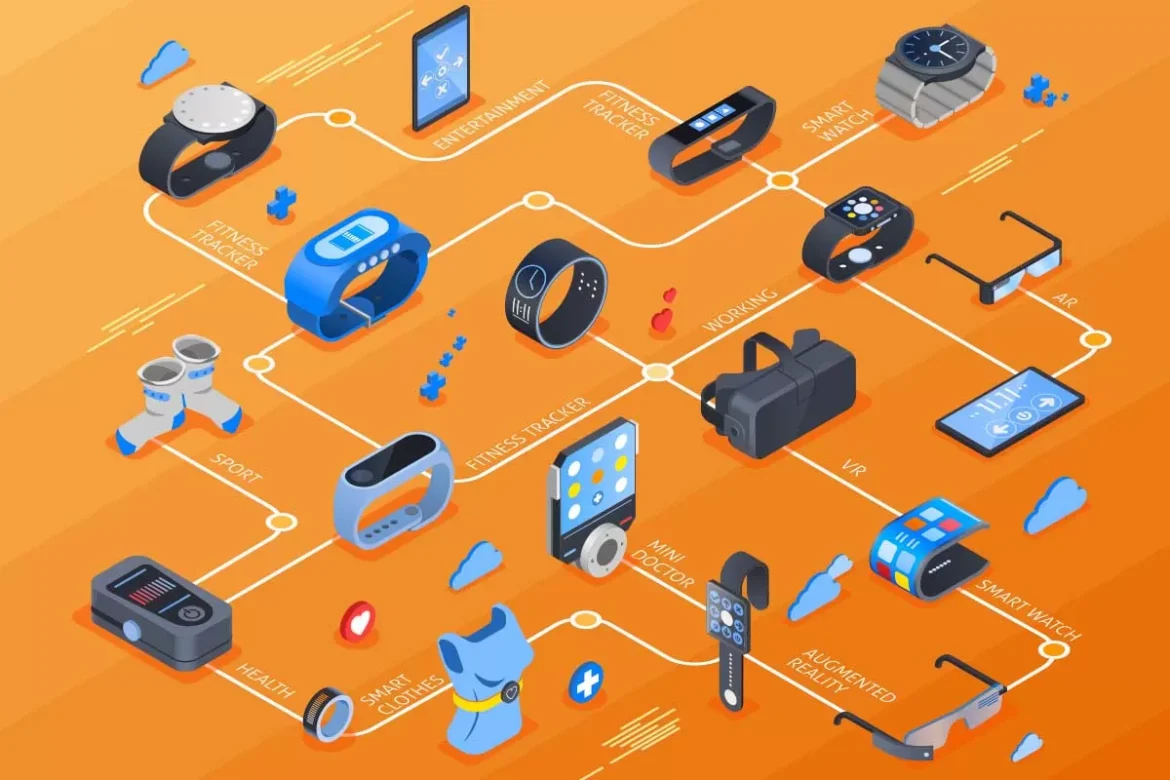The Future of Wearable Tech: How It’s Changing the Game in Today’s World
In recent years, wearable technology has evolved from fitness trackers and smartwatches into a wide range of devices aimed at improving health, productivity, and entertainment. With innovations in AI, health monitoring, and communication, wearable tech is reshaping how we interact with the digital world. Whether you’re looking to enhance your workout routines, track your sleep, or simply stay connected, wearables have something for everyone.
Click Here To Get The Best Deal On Wearable Tech
1. What Is Wearable Tech?
Wearable technology refers to any electronic device that can be worn on the body or incorporated into clothing. These gadgets often have sensors to collect data, such as heart rate, steps, and other physiological metrics. Wearables now include a broad range of devices, such as:
- Smartwatches (e.g., Apple Watch, Samsung Galaxy Watch)
- Fitness trackers (e.g., Fitbit, Garmin)
- Smart glasses (e.g., Google Glass, Vuzix Blade)
- Wearable health monitors (e.g., Oura Ring, ECG devices)
- Virtual Reality (VR) and Augmented Reality (AR) headsets (e.g., Oculus, Microsoft HoloLens)
Wearables integrate with smartphones and other tech ecosystems, providing users with instant access to information, health data, and communication tools.
2. The Impact of Wearable Tech on Health and Fitness
Wearables have revolutionized how we track and manage our health. Fitness enthusiasts have long relied on devices like Fitbit or Apple Watch to track steps, monitor heart rate, and calculate calories burned. However, the latest generation of devices offers even more advanced features:
- Sleep Tracking: Devices like the Oura Ring and Whoop monitor sleep cycles, giving users insights into sleep quality, REM cycles, and recovery times. Sleep data helps users make lifestyle changes that improve rest and overall wellness.
- Heart Health Monitoring: Some wearables, such as the Apple Watch Series 8, feature ECG (electrocardiogram) monitoring, which can detect irregular heart rhythms and potentially prevent serious conditions like stroke.
- Blood Oxygen Monitoring: In response to increasing health concerns, newer devices offer SpO2 sensors, allowing users to measure oxygen saturation levels—a key indicator of lung and cardiovascular health.
Wearables are not just for athletes; they’re crucial for people with chronic conditions, helping them track health metrics and share data with their healthcare providers for more personalized care.
3. Smartwatches: The Modern-Day Swiss Army Knife
Smartwatches have moved beyond just telling time or tracking steps. They’re now mini-computers on your wrist, capable of performing various functions:
- Notifications and Communication: Stay connected by receiving calls, texts, and social media alerts directly to your wrist. You can respond to messages, set reminders, and even make payments through platforms like Apple Pay or Google Pay.
- GPS and Navigation: Smartwatches, like the Garmin Fenix or Apple Watch Ultra, come with built-in GPS, allowing users to track their routes, distances, and speeds, making them ideal for runners, cyclists, and hikers.
- Fitness and Wellness Features: Most smartwatches offer workout tracking, from yoga to high-intensity interval training (HIIT), making them an all-in-one tool for fitness.
As more manufacturers focus on improving battery life, smartwatches are becoming increasingly essential in everyday life, offering continuous monitoring and convenience.
4. Fashion Meets Function: The Rise of Smart Rings and Glasses
While smartwatches dominate the wearable market, other devices are emerging to offer more discreet ways of accessing tech benefits.
- Smart Rings: Devices like the Oura Ring or Motiv Ring offer comprehensive health tracking, including heart rate, sleep patterns, and activity levels—all in a sleek, minimal design. These rings are ideal for those who want the benefits of health monitoring without the bulk of a smartwatch.
- Smart Glasses: With the development of AR and VR, smart glasses are becoming more prevalent. Devices like Ray-Ban Stories and Google Glass allow users to capture photos, interact with apps, and even navigate using voice commands. AR glasses are gaining traction in professional fields, especially in areas like construction, design, and healthcare, where hands-free data access is invaluable.
Click Here To Get The Best Deal On Wearable Tech
5. Wearable Tech Beyond Fitness: New Frontiers in Productivity and Entertainment
The rise of VR headsets like the Meta Quest 3 and Sony’s PlayStation VR2 has changed how we interact with digital content, offering immersive gaming experiences and virtual collaboration spaces. These devices go beyond entertainment:
- Virtual Workspaces: With VR technology, people can now hold meetings in virtual rooms, improving remote work collaboration. Tech like Microsoft HoloLens allows for mixed-reality environments where physical and digital worlds blend, which can be especially useful in training and education.
- Productivity: Wearables like smart earbuds with AI assistants (e.g., Amazon Echo Buds) can manage schedules, take voice commands, and assist with daily tasks, making them powerful tools for staying productive on the go.
6. Future Trends: Where Wearable Tech Is Heading
As wearable tech continues to advance, we can expect even more exciting innovations:
- Medical Wearables: With the growing focus on personalized healthcare, wearables are expected to play a major role in monitoring chronic illnesses, including diabetes and hypertension. Devices that monitor blood glucose or detect stress levels in real-time are currently in development.
- Augmented Reality: AR wearables could soon become mainstream, allowing users to seamlessly integrate digital information into their physical environments. Imagine being able to access real-time directions, translations, or health insights without looking at a screen.
Conclusion: Why Wearable Tech Is Here to Stay
Wearable technology is more than just a trend; it’s reshaping the way we live, work, and play. Whether you’re looking to improve your health, stay connected, or enjoy new entertainment experiences, wearables offer endless possibilities. As they continue to evolve, wearables will become even more integrated into our lives, offering smarter, more personalized solutions for everyday tasks and long-term wellness.
With innovations around the corner, now is the perfect time to invest in wearable tech that enhances not just your fitness but your overall lifestyle.
References:
- Healthline (2024). “The Latest Wearable Tech Trends.”
- Wired (2024). “Best Wearable Devices for Fitness and Health Monitoring.”
- TechCrunch (2024). “The Rise of AR and VR in Wearable Technology.”



